When the Rotunda burned down in October of 1895 — faulty wiring was to blame — University of Virginia officials immediately pushed to rebuild, and in 1896, after a false start with McDonald Brothers of Louisville, Kentucky, the Board of Visitors hired prominent New York architects McKim, Mead & White. Stanford White, the artistic force of the firm, was the lead architect on the Rotunda redesign. The University also hired the firm to design three new buildings to enclose the South Lawn. These buildings, also designed by White, came to be Rouss, Cocke, and Cabell Halls, and White also went on to design Garrett Hall as well as Carr’s Hill, the UVA president’s home.
The drawings of those iconic buildings, as well as those of a boiler house and a proposed dormitory that was never built, are now available online in an easy-to-use format as part of the McKim, Mead and White architectural drawings collection. The collection also includes a drawing from the McDonald Brothers studio (ca. 1895) as well as an 1899 blueprint map of the University by Kaigiro Sugino showing the gas, water, and sewer systems.
The collection is comprised of ink drawings on linen, blueprints, and pencil sketches. A total of 251 items were digitized by the Library’s Digital Production Group and made available online in 2024. More information is available in the guide, and the images can be navigated and magnified through the “Navigate this Collection” sidebar.
View details from a sample of the collection below, and click on the image or use the linked captions to explore the full drawing. All images below are undated and are from McKim, Mead, and White architectural drawings, RG-31/1/2:2.872, Albert and Shirley Small Special Collections Library.
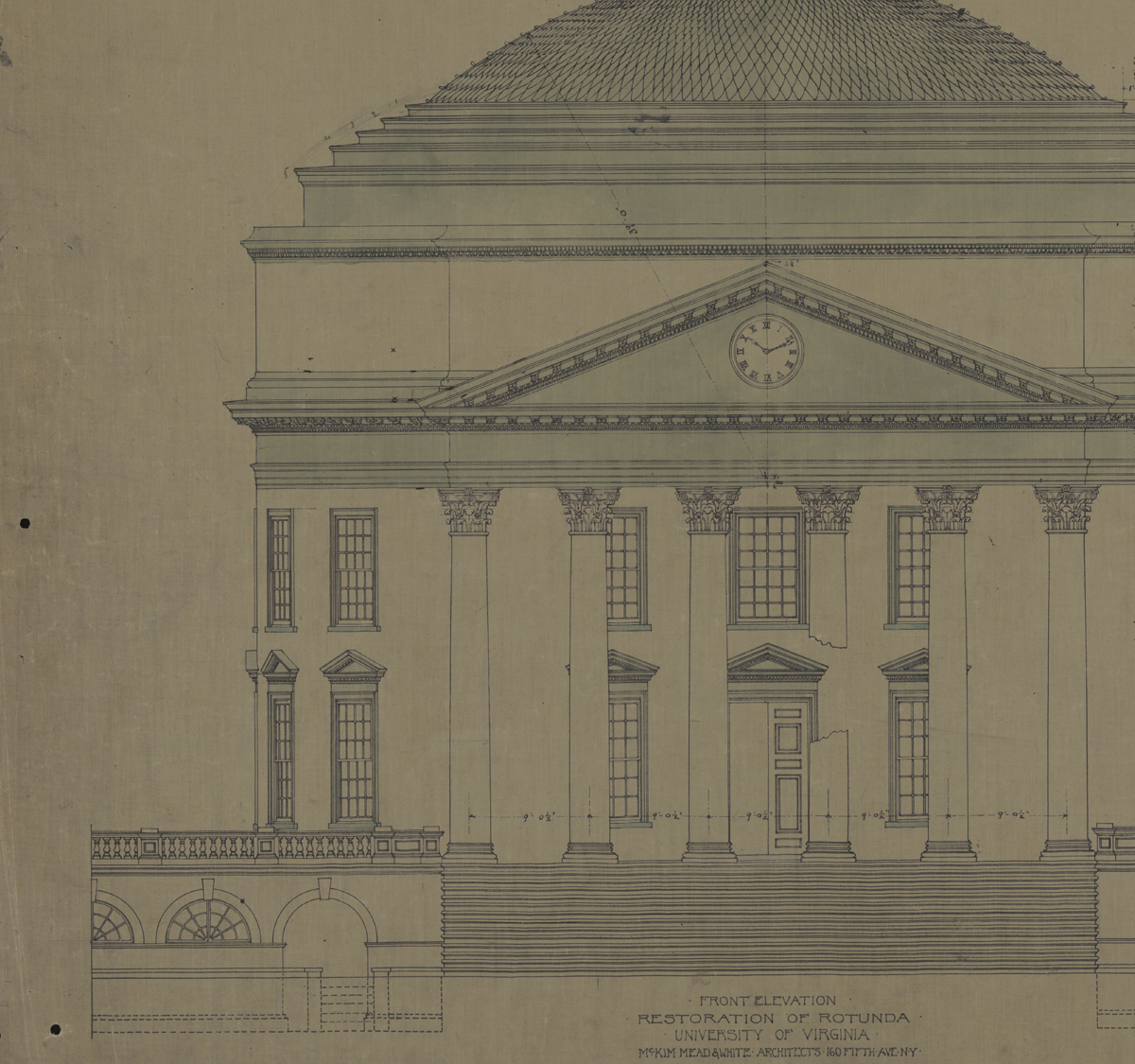
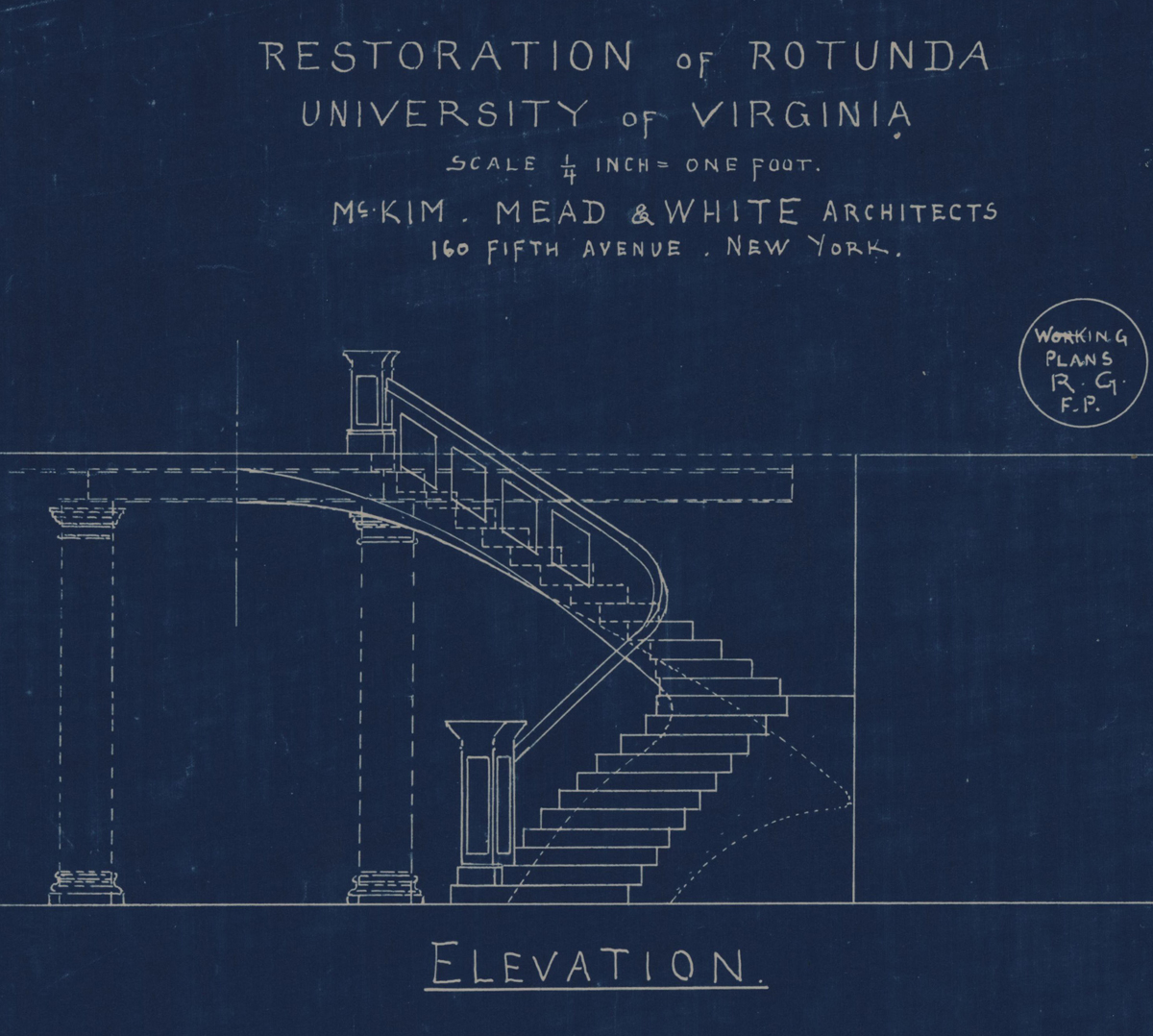
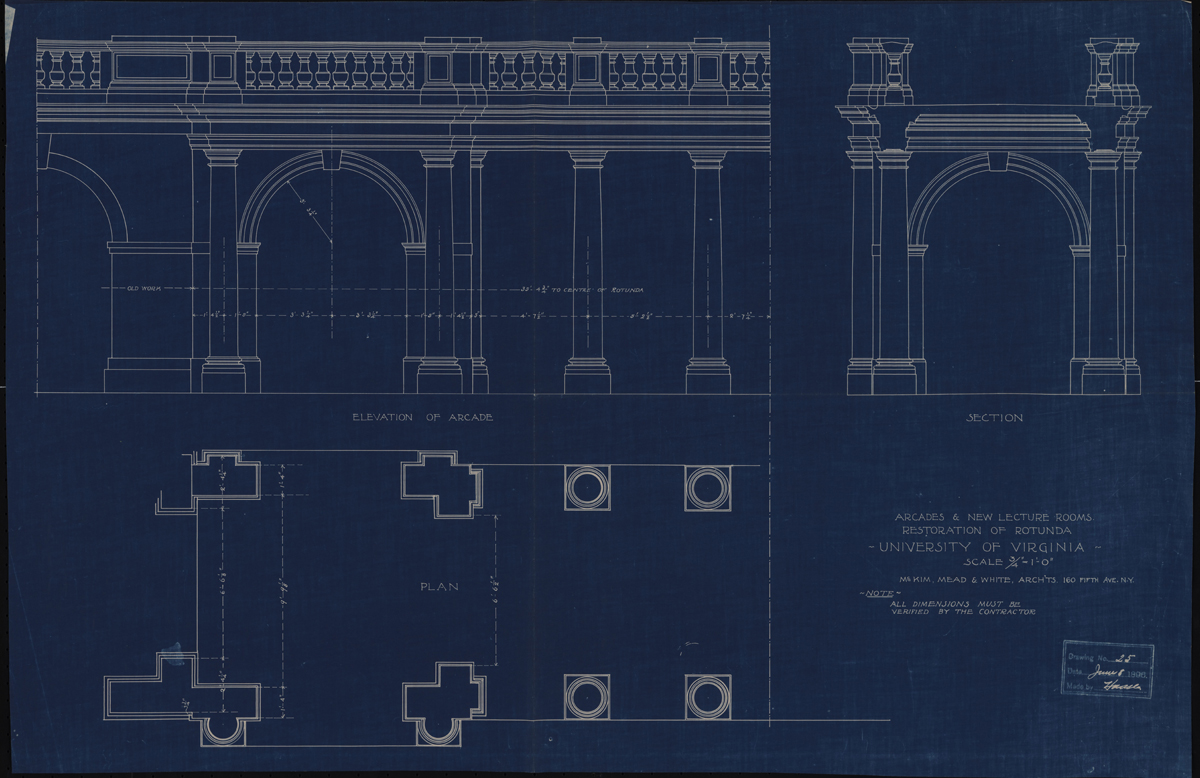
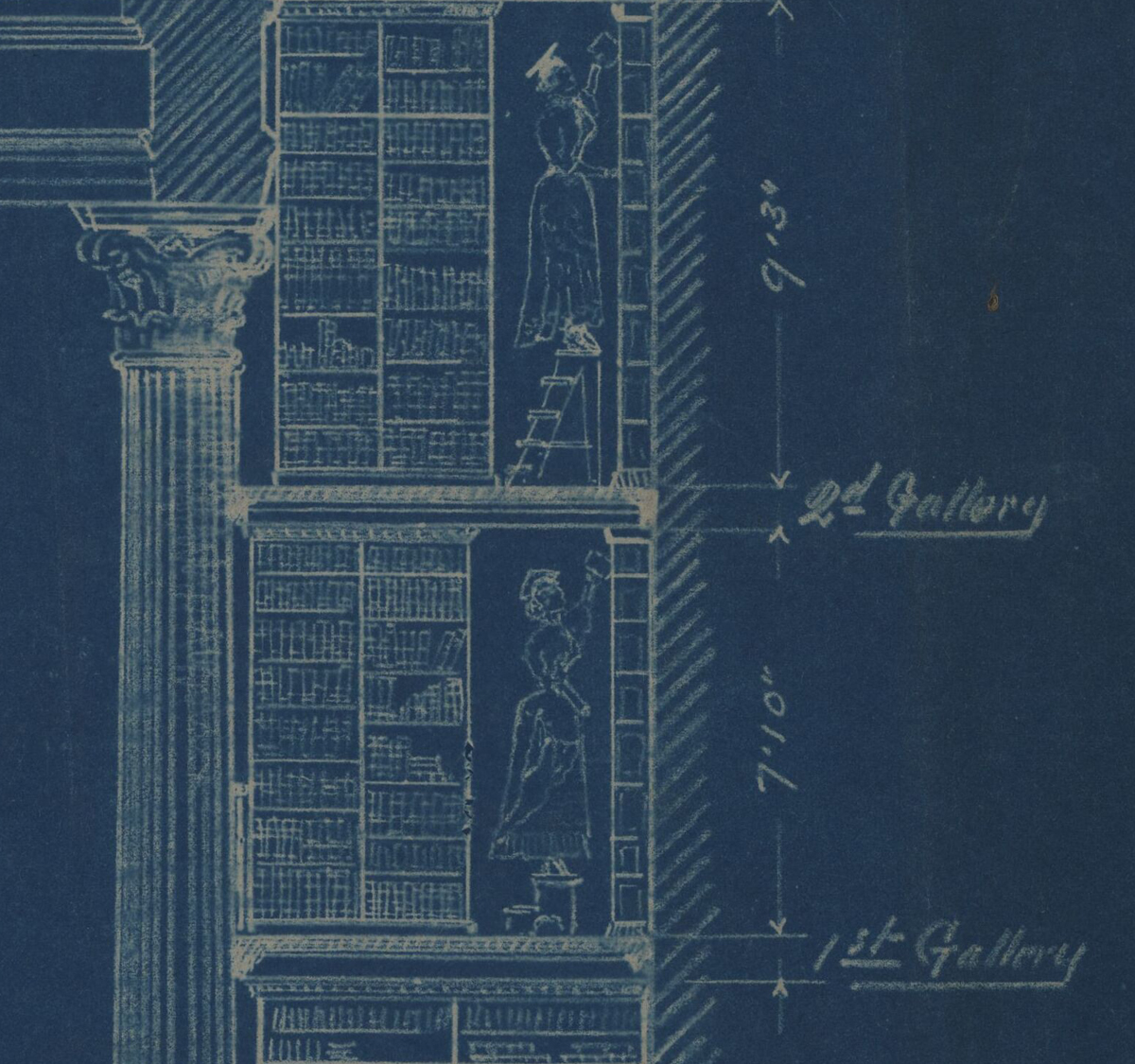
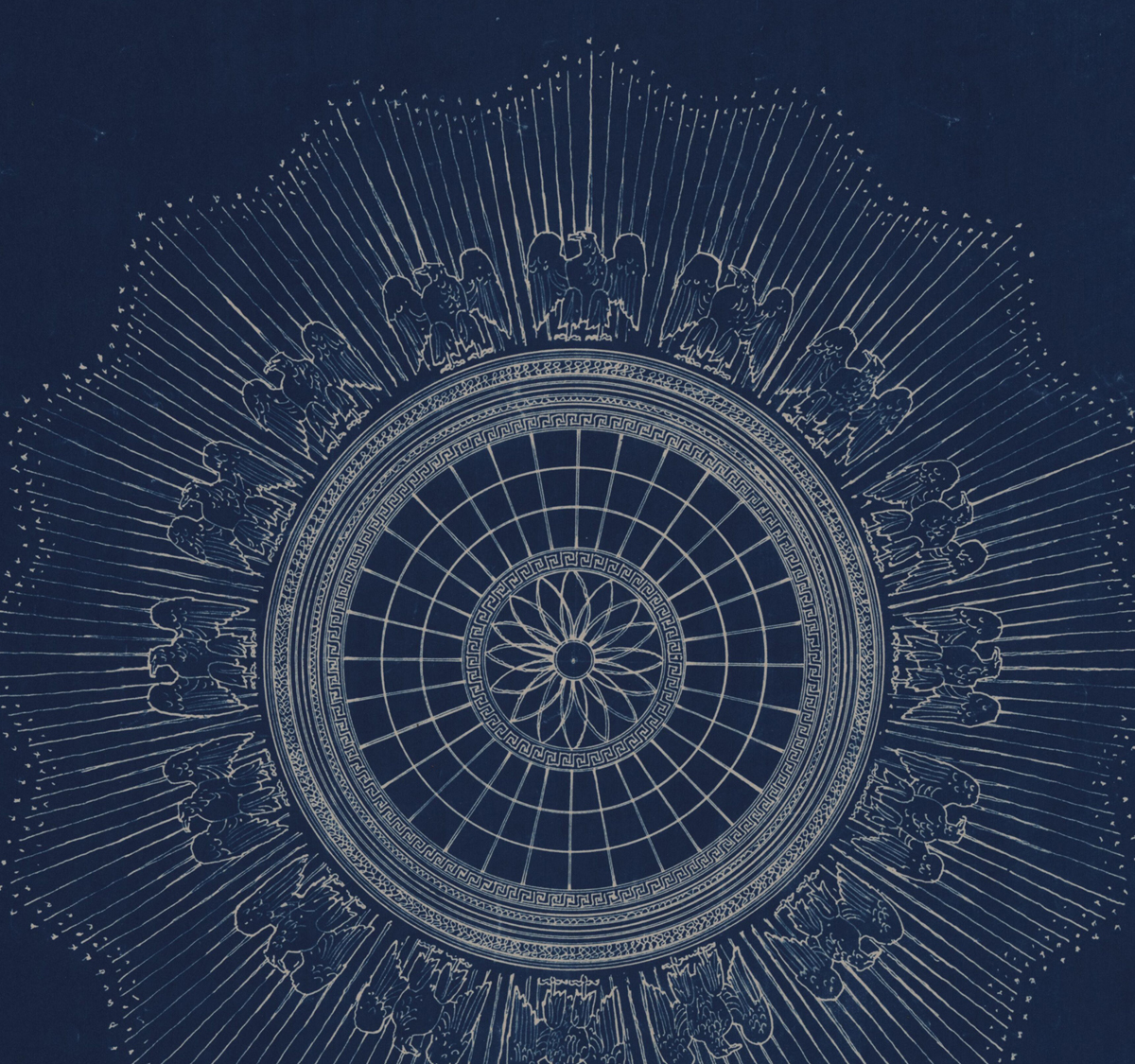
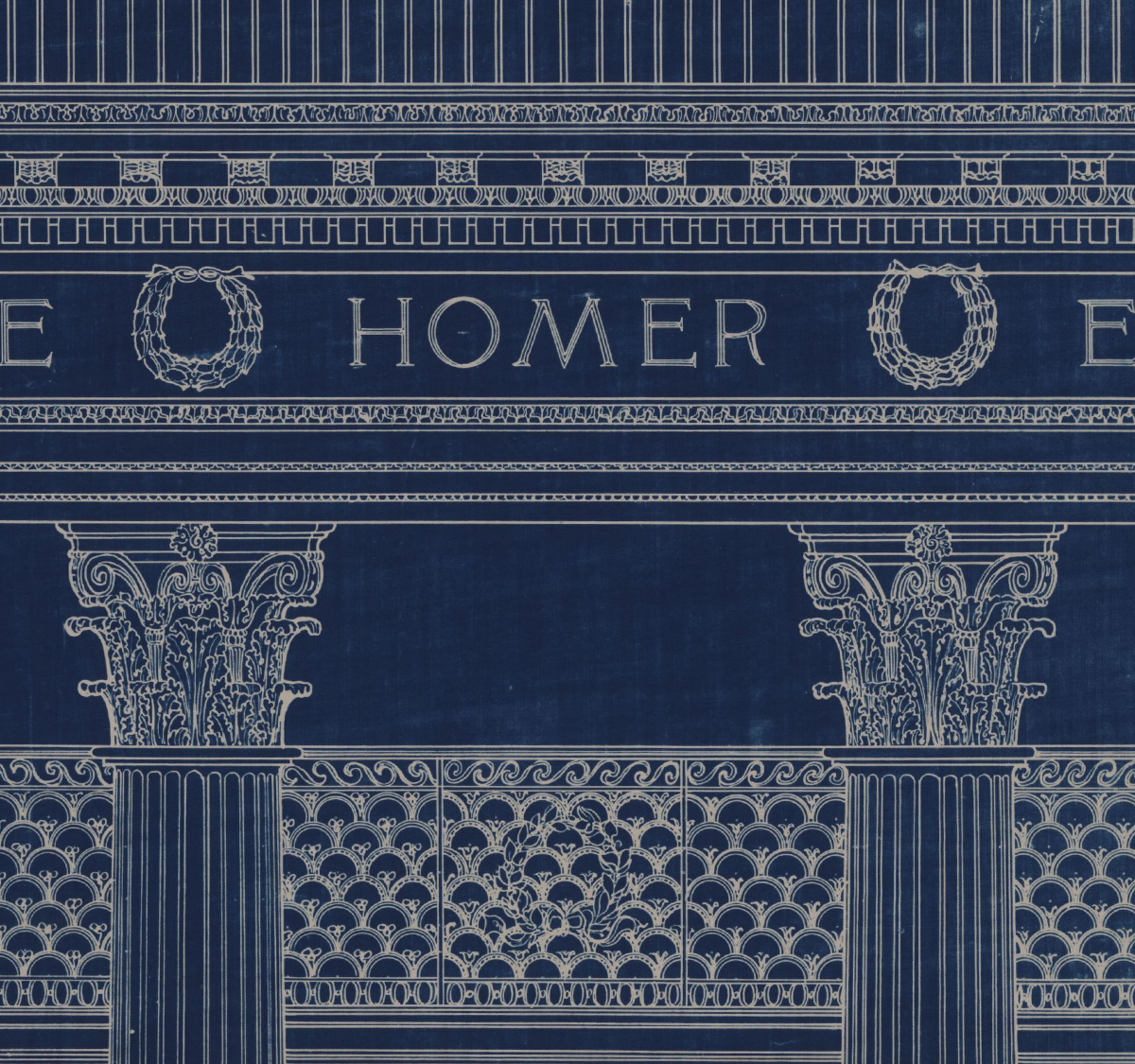
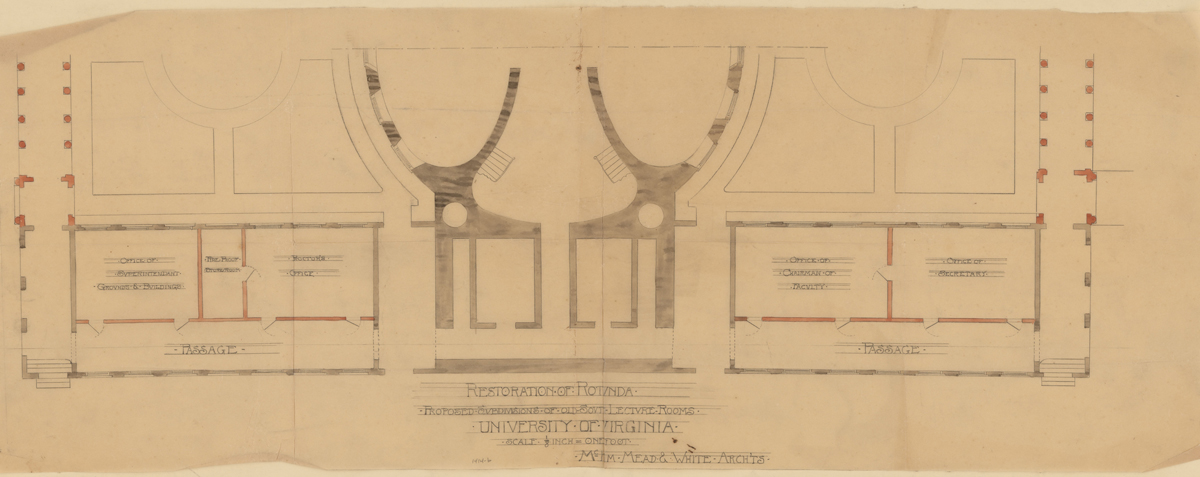
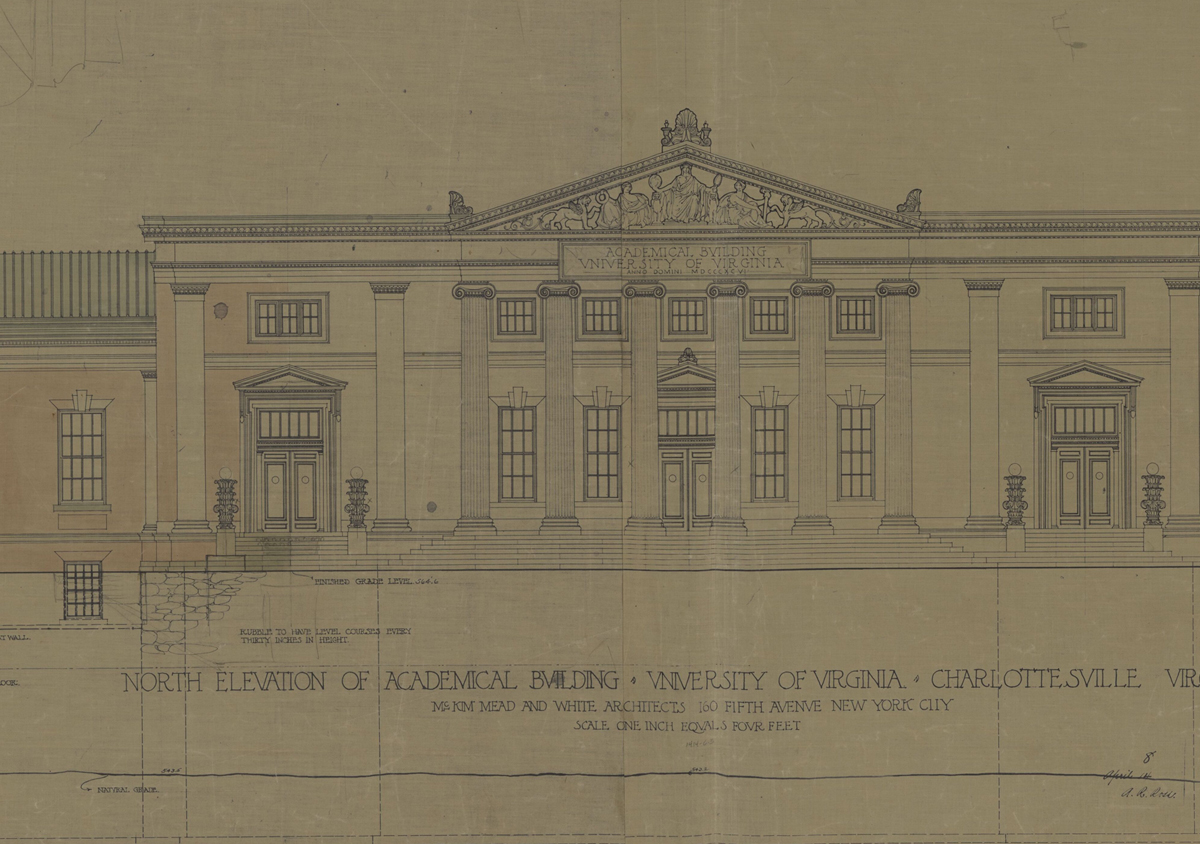
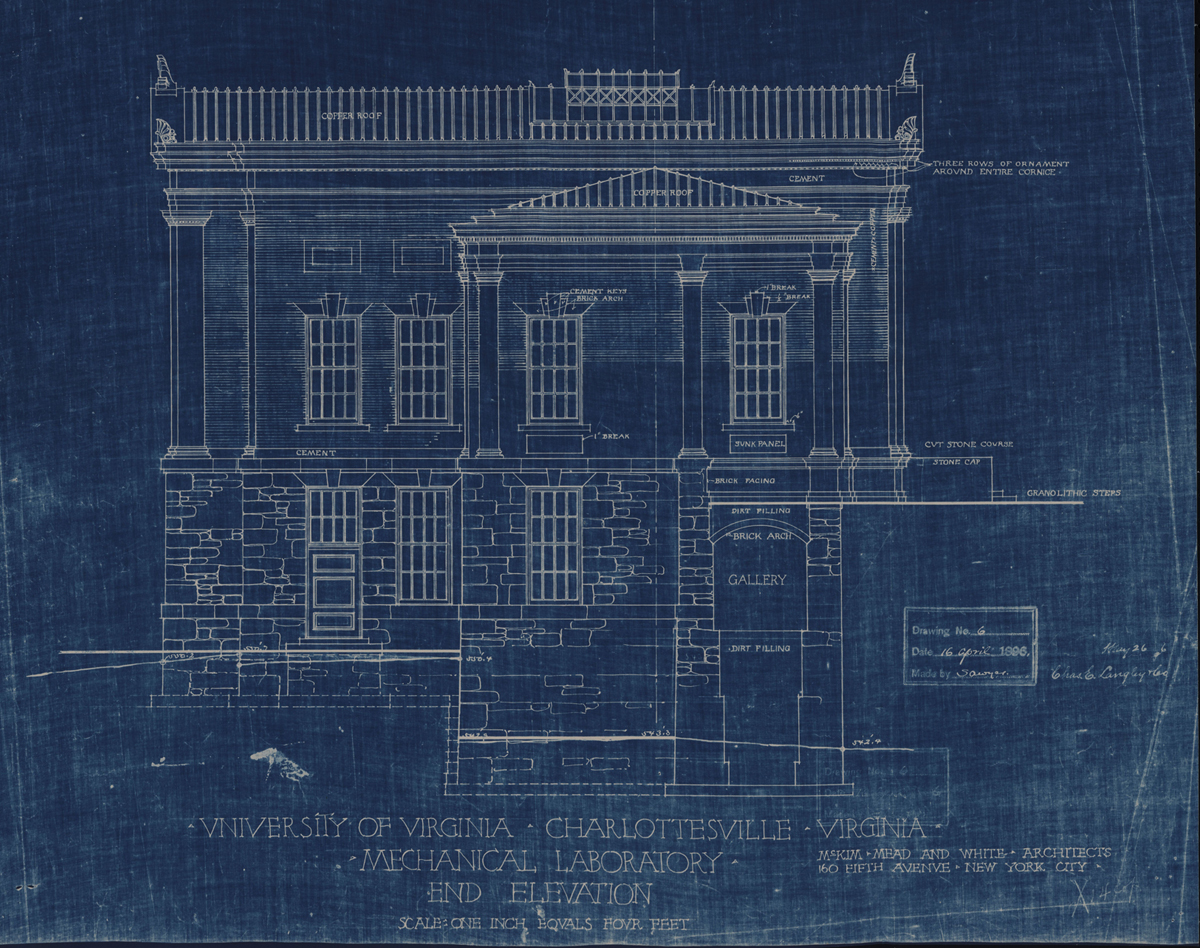
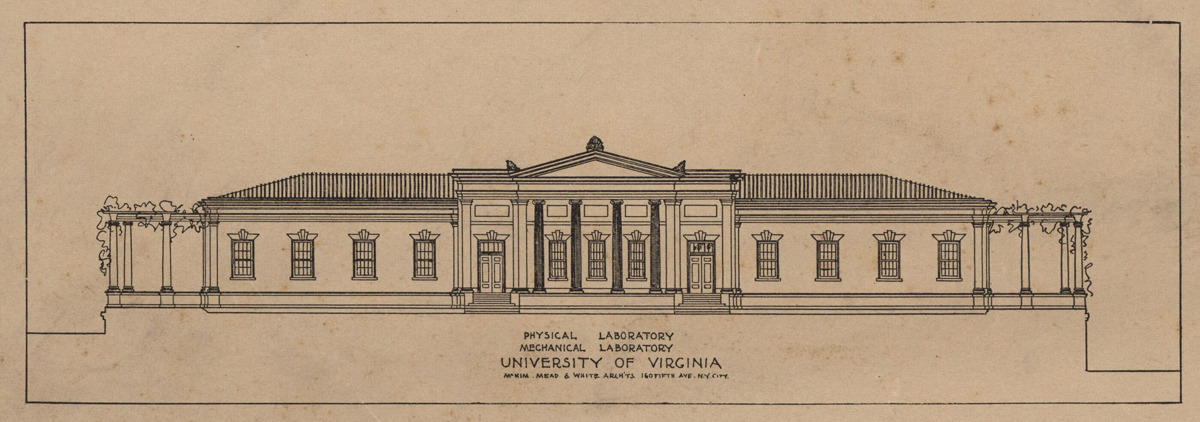
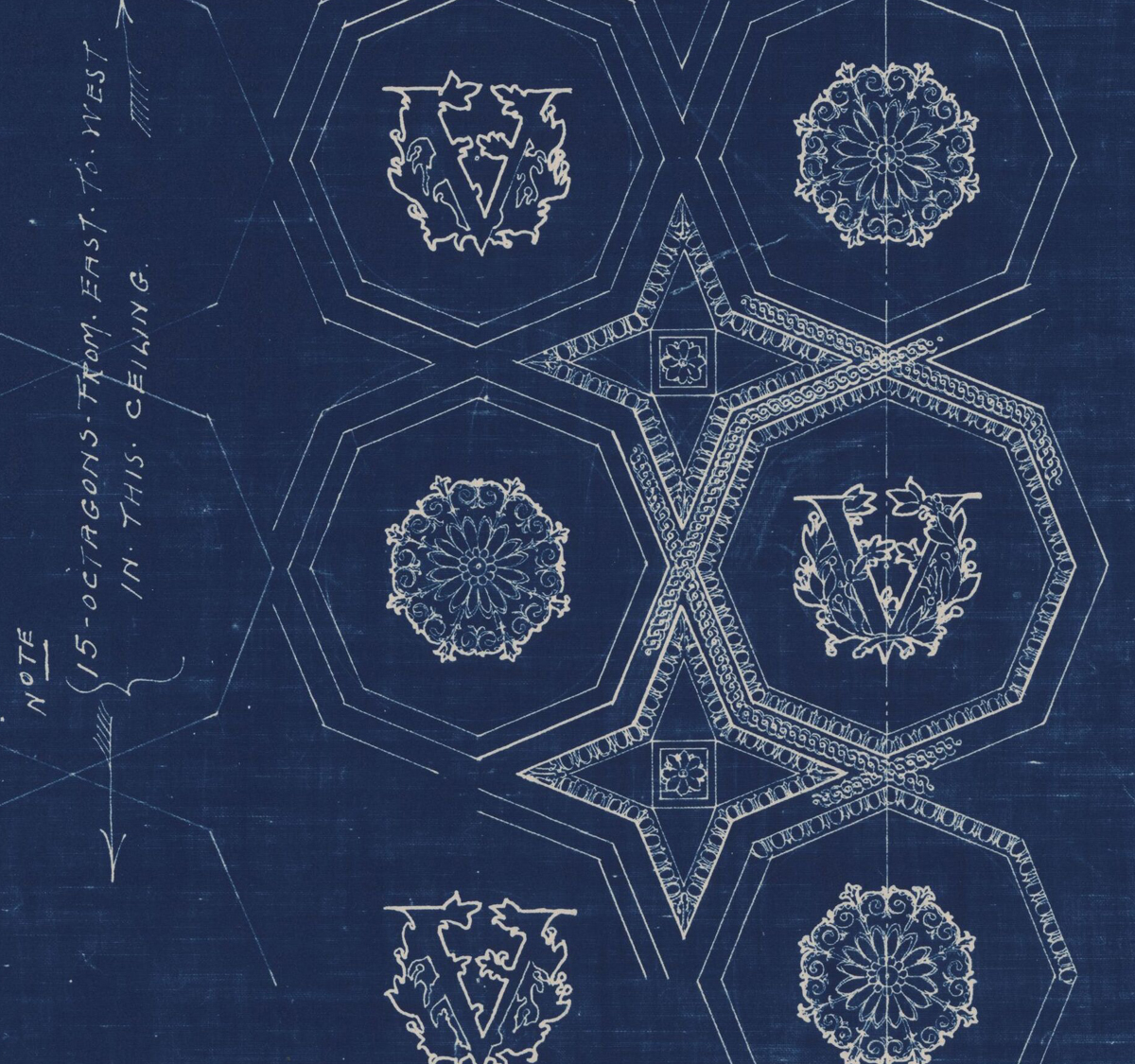
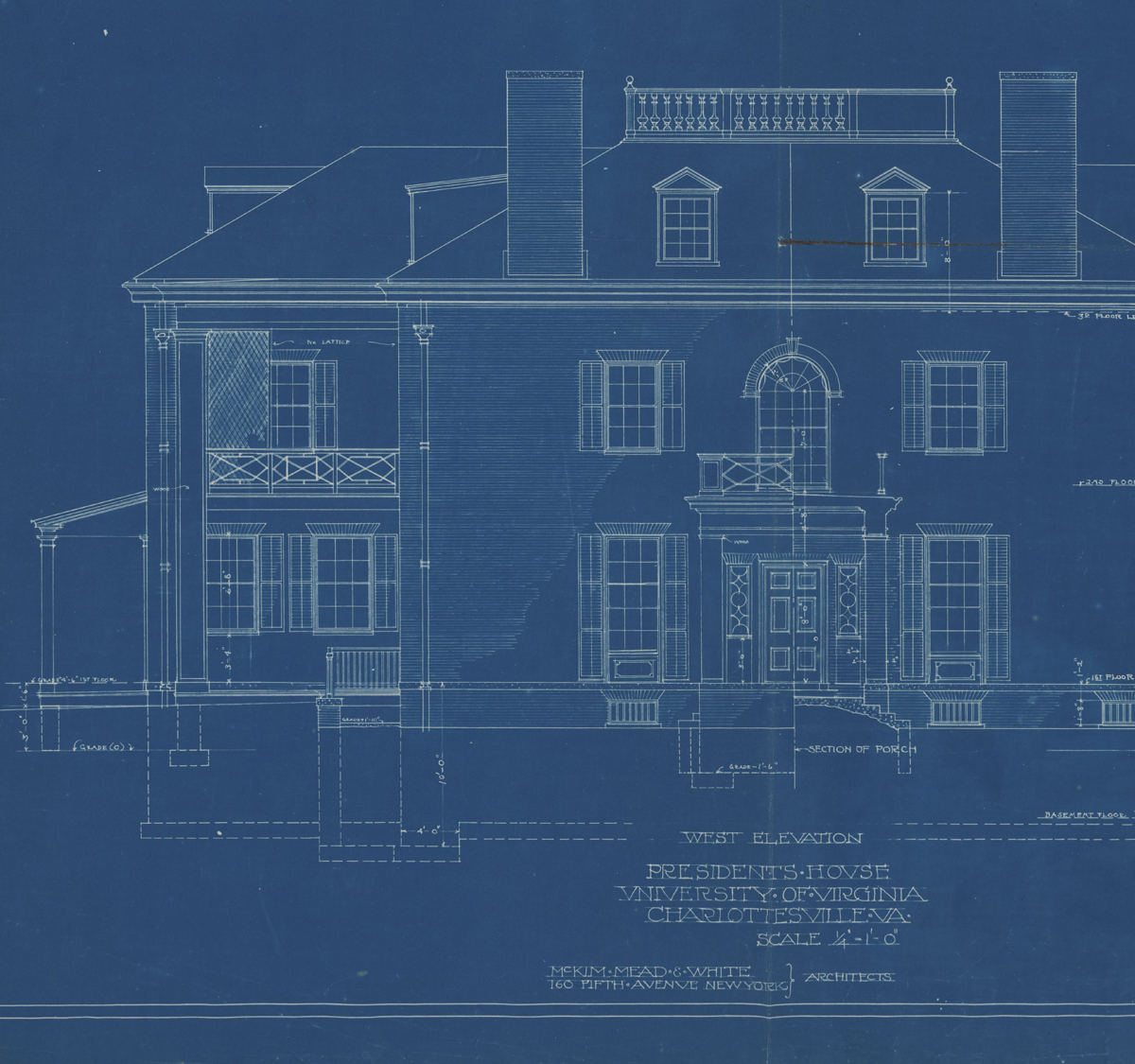
For a deeper dive into these historic buildings, read up on the history of the Rotunda and Carr's Hill, check out the Garrett Hall Historic Structures Report (pdf), and peruse "From Village to Grounds: Architecture after Jefferson at the University of Virginia."
